(Photo above: Moderator Andrew Parietti ’10 announces the results to student entrepreneurs, including Ryan Diew ’17 [middle], who pitched their ventures during a Shark Tank–style competition. Photo by Gerard Gaskin)
Ventures with teeth
True grit is more than a classic Western. It’s also the stuff of great start-ups at Colgate. The fifth Entrepreneur Weekend in April celebrated the relentless determination that goes into Thought Into Action (TIA) ventures and connected their student creators with veteran business builders.
A keynote conversation on Friday night featured Tyler Haney, CEO of Outdoor Voices (whose president is Andrew Parietti ’10); Payal Kadakia, CEO and co-founder of ClassPass; Jon McNeill, president of global sales and service at Tesla Motors; Clare MacGoey, CFO of Giphy; and David Fialkow ’81, managing director at General Catalyst Partners. It was moderated by Steven Bertoni ’02, tech editor at Forbes.
For students interested in running their own start-ups, McNeill broke the process down into a series of steps: identify a pain point or need in the market, then decide if there is a market for the product that would fill that need, and calculate the potential profit margins.
“But then there’s a big step,” McNeill cautioned. “That’s actually going and doing it, and that’s where ninety-nine percent of ideas go to die.”
After offering their insights into the successes and failures as advisers, the panelists became judges, listening to students pitch their TIA ventures.
Moderated by Peter Boyce of General Catalyst Partners and Rough Draft Ventures, alongside Parietti, the Shark Tank–style competition featured Samantha Braver ’18 and Ryan Diew ’17 with their airport navigation app Trippie; Richard Sanders ’17 and his sports beverage company Seela; Miranda Scott ’18 with The Waffle Cookie, a socially conscious baked-goods start-up; and Rex Messing ’15 of outdoor adventure firm Tuwa Tuwa, Inc.
After delivering their pitches and answering questions from the pros, the students split a $20,000 pool of capital that will help them move their ventures forward.
The audience also met the alumni council’s 2016 Entrepreneur of the Year award winner, John Levisay ’89, the CEO of Sympoz/Craftsy. In his five years with the online craft education company, Levisay has taken Craftsy through five rounds of funding, totaling $100 million, and increased his staff from four employees to more than 250.
Prior to the Friday-night keynote, panelists spoke in small groups with students interested in entrepreneurship and working with start-ups. The next day, TIA participants presented their products and services to parents, alumni, and friends in the Hall of Presidents.
In the spotlight
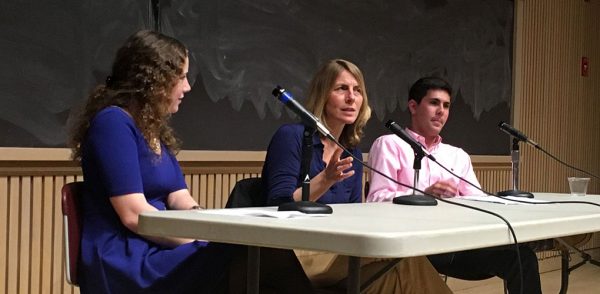
“Don’t ever be afraid to ask tough questions of powerful institutions,” investigative journalist Sacha Pfeiffer said.
You may know her as Rachel McAdams’s character in the Academy Award–winning movie Spotlight. Sacha Pfeiffer, Pulitzer Prize–winning investigative journalist, spoke to students in April about her role on the Boston Globe Spotlight Team that published a story on the Catholic Church sex-abuse scandal.
Pfeiffer led a discussion regarding her work on this case and answered questions, moderated by the Maroon-News editors-in-chief Julia Queller ’16 and Spencer Serling ’16.
“I think this movie is an incredibly authentic portrayal of how we do our jobs… They worked with us so closely to make it that way,” said Pfeiffer, who has been a reporter with the Globe since 1995.
“For those of you who are interested in [careers] in journalism, I think these are the most wonderful jobs in the world. As this movie shows, you have the [potential] to do something that can have great impact and great meaning.”
— Jessica Rice ’16
Supporting survivors
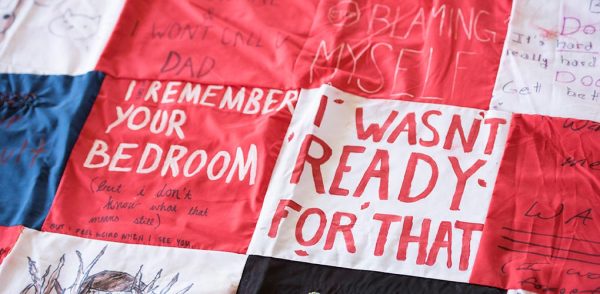
(Photo by Susan Kahn)
The room was quiet as community members walked around viewing the Monument Quilt laid on the Hall of Presidents floor. The quilt, which has been traveling the country collecting squares for the last three years, was brought to campus and displayed for the afternoon of March 29.
Created in 2013, the quilt is intended to create a public healing space by and for survivors of sexual assault and abuse. By stitching together the stories of many, it aims to not only share individuals’ experiences, but also provide support.
“[The mood] felt very reverent,” said Allie Fry, women’s studies program coordinator, who organized the event. “It was powerful to see members of our community engage in a meditative and empathetic way.”
In addition to viewing the quilt in a safe space where people could be contemplative and comfort each other, Colgate visitors had the opportunity to contribute a square and participate in workshops.
The event began with a brown bag luncheon featuring Hannah Brancato and Rebecca Nagle, co-founders and co-directors of FORCE: Upsetting Rape Culture, which created the Monument Quilt; and Deletta Gillespe, an activist and artist. Panelists discussed several ways in which they are working to bring visibility to the culture of consent and promote conversations.
“I thought it was important to bring the quilt in order to offer a space that is specifically by and for survivors, that prioritizes their healing, that shows that there is no one way in which we experience or respond to violence,” said Fry.
The quilt will be finished when it comprises 6,000 squares — the number of sexual assaults that, statistically speaking, will take place during one week in the United States. The finished quilt will eventually blanket the National Mall in Washington, D.C., during a weeklong display.
“Monuments are a space for survivors to heal and reconnect with community, and it’s an important part of the healing process to have that kind of a public venue,” Brancato told the Maroon-News. “We all see the magnitude of the problem and feel driven to end sexual assault, to think of it as a problem that can end, not something we have to accept.”
— Emma Loftus ’16
Back on campus: Leading by example
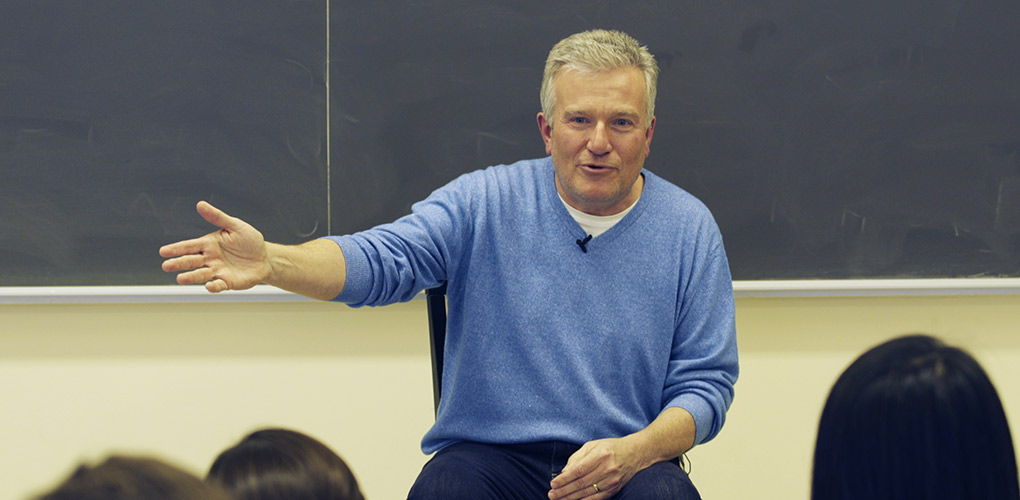
Duncan Niederauer ’81
A Chenango Valley sunset shone through classroom windows as students opened their notebooks and laptops, eagerly awaiting a conversation with Chase Carey ’76, executive vice chairman of 21st Century Fox, kicking off Leadership Through Change, Innovation, and Disruption.
Part of the Robert A. Fox ’59 Management and Leadership Skills Program, this new career development course brought alumni to campus during spring 2016 to offer advice and shed light on the ways in which the digital era has impacted their industries.
“The topic is particularly relevant when you talk with 20-year-olds who are essentially the ones turning business upside down,” said Carey.
A dedicated group of sophomores, juniors, and seniors attended the intimate weekly gatherings, facilitated by Murray Decock ’80, adjunct instructor and senior vice president for external relations, advancement, and initiatives. Decock began each session with an introduction, followed by a dialogue with the presenter and an opportunity for students to ask questions.
“It was extremely motivating to get a chance to speak to these amazing alumni who were once sitting in our seats — quite literally, in Alumni Hall,” said Danielle Dillon ’18, an English and political science double major from Hingham, Mass.
Angela Morgenstern ’97, director of product innovation and original content at Netflix, spoke to the disruption of the TV and entertainment industry. Maggie Dunne ’13, founder of Lakota Children’s Enrichment, discussed the importance of risk taking and the influence of digital communications on her nonprofit organization.
Duncan Niederauer ’81, former CEO of the New York Stock Exchange (NYSE), traced the challenge of converting the NYSE to a digital system and assessing who was proactively dedicated to enacting this change.
He was one of several speakers who noted that leaders with emotional intelligence and empathic awareness are most effective at adapting to industry advances and fostering positive work environments. “You’re obliged to leave every situation better than you found it — it’s that simple … you are in a position to make other people’s lives better,” he said.
The final presenter, Tribeca Film Festival co-founder Craig Hatkoff ’76, spoke about the transformative power of storytelling in a digital age. He co-founded the film festival with his wife, Jane, and actor Robert DeNiro after the 9/11 terrorist attacks as a way of rebuilding the economy and the spirit in New York City’s Tribeca neighborhood. “Having a set of skills that allows you to inspire people is, to me, the most interesting aspect of leadership,” Hatkoff said.
Michela Hendell ’18, a political science major from Scarsdale, N.Y., identified an underlying theme within the presentations. “Liberal arts students are more qualified to succeed after graduation,” Hendell said. “We are trained to think critically and analyze an array of information, and our comprehensive curriculum empowers us to adjust to new challenges. These abilities are increasingly important as industries are being disrupted.”
As the series progressed through the spring semester, the days lengthened, and the light streaming through the classroom windows illuminated students’ new knowledge and skills.
— Lauren Casella ’16
Shirt tales
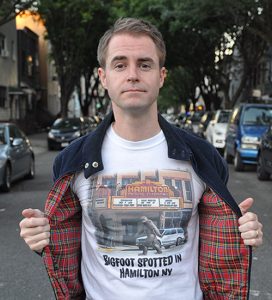
Life imitates art
In the indie film Pottersville, actor Michael Torpey ’02 plays the part of Norm, who is trying to capitalize on a Bigfoot sighting by selling merchandise. Just as Bigfoot captivated the town of Pottersville, the movie cast’s celebrities (including Ron Perlman, Michael Shannon, Judy Greer, and Christina Hendricks) dazzled Hamilton when filming took place here in January. Now, the sets have been cleared away and the stars have returned to the city as they await the film’s release (yet to be announced). But, just like in the movie, there’s always a souvenir to be sold.
Pen + paper = social justice
Zines — inexpensive, self-published magazines — started in the 1930s and made periodic resurgences every few decades as a way to give ink to writing that was incongruous with mainstream media. Now they’ve made another resurgence as part of the broader movement for social justice at Colgate.
Early in the fall of 2015, the Center for Women’s Studies purchased a few subscription zines to put on display. “Before I knew it, several students and WMST interns were generating their own,” said Meika Loe, the director of the center and a sociology and women’s studies professor. “Our staff put out a box of supplies to encourage this, and the phenomenon blossomed.” Loe and program assistant Allie Fry also coordinated a brown bag luncheon that led students through creating a Colgate community zine.
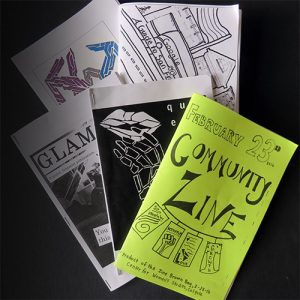 Emily Daniel ’18, a member of Loe’s Sophomore Residential Seminar (SRS) on immigrant and sexual cultures in San Francisco, became a wholehearted fan of the medium. “What I love about [them] is that they’re a subversive form,” she said. “You can make them with scissors, a glue stick, and some Sharpies. You hand them out for free like leaflets, which situates them in a long tradition of political media, and there’s really no censorship involved, so zines can be as radical and fearless as you want them to be.” Daniel and her class voluntarily created a San Francisco guidebook zine based on their trip for their final project.
Emily Daniel ’18, a member of Loe’s Sophomore Residential Seminar (SRS) on immigrant and sexual cultures in San Francisco, became a wholehearted fan of the medium. “What I love about [them] is that they’re a subversive form,” she said. “You can make them with scissors, a glue stick, and some Sharpies. You hand them out for free like leaflets, which situates them in a long tradition of political media, and there’s really no censorship involved, so zines can be as radical and fearless as you want them to be.” Daniel and her class voluntarily created a San Francisco guidebook zine based on their trip for their final project.
The zines that circulated around campus in the spring described everything from a doula’s role in the birthing process to the recent North Carolina “bathroom bill” controversy. One explained Colgate’s Queerfest (“an annual student-run-and-organized celebration of LGBTQI+ lives and identities”) with a program of events, while another, Glam!, has been serialized
by Jake Mahr ’17.
“I think zines can be helpful in starting hard conversations,” said Mahr. Glam! takes complex topics, from feminism to gender issues, and breaks them down in a digestible way. “They bring ideas, thoughts, and stories [into] spaces like the Coop or the library, where they can reach broad audiences.”
Kim Creasap, a visiting assistant professor of sociology who uses zines in her research on social movements and in her gender theory courses, noticed a similar effect. “They’re a way for students who feel inhibited, silenced, marginalized — whose voices they don’t feel are being heard on campus — to be heard. They make the personal political and get students to connect theory and everyday life.”
Other students seem to agree. Mahr, Hannah O’Malley ’17, and Mariam Nael ’18 will attend a biennial conference in Seneca Falls, N.Y., this fall to lead a workshop on zine making, focusing on art as a form of resistance and a method of reinventing societal norms.
— Lee Tremblay ’16
Going once, going twice…
This year’s Konosioni Senior Honor Society charity auction raised a record-breaking $32,000 for local organizations. The 19th-annual event, which coincided with Entrepreneurship Weekend on April 8, drew parents, alumni, and students.
The event included both a silent auction and live bidding. The highest grossing items were two parties for 75 people each at the future home of President-Elect Brian Casey that sold for a total of approximately $10,000. Other items included a private movie screening at the Hamilton Theater and hot tickets for everything from The Tonight Show Starring Jimmy Fallon to the Red Sox. Alumni — including former Konosioni members — donated many of the items.
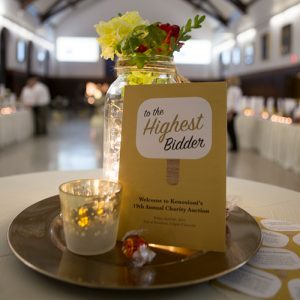
(Photo by Alice Virden-Speer)
Last year, in order to allocate auction money and reach a larger audience, Konosioni teamed up with Colgate’s Upstate Institute to launch the crowdfunding website Madison County Gives. The Konosioni Class of 2017 will again distribute the money raised through the site.
The Madison County charities that benefited this year (from the 2015 auction proceeds) included Community Bikes, Friends of Rogers, Fiver Children’s Foundation, Food Bank of Central New York, Hamilton Food Cupboard, Community Action Partnership, and Mohawk Valley Resource Center for Refugees.
“As students, it’s easy for us to forget everything that makes this area home for us, and running a philanthropic event like this has been a foundation for Konosioni’s commitment to service,” said Ranissa Adityavarman ’16, Konosioni president.
— Emma Loftus ’16
Life after Colgate: Class of 2015
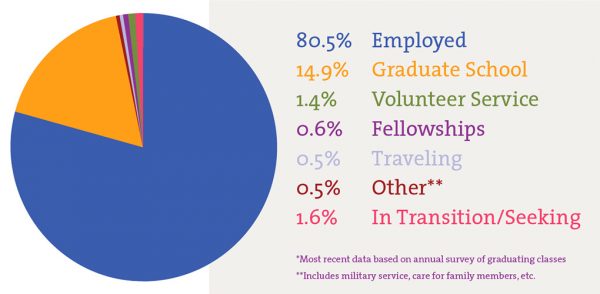
Carrying the torch
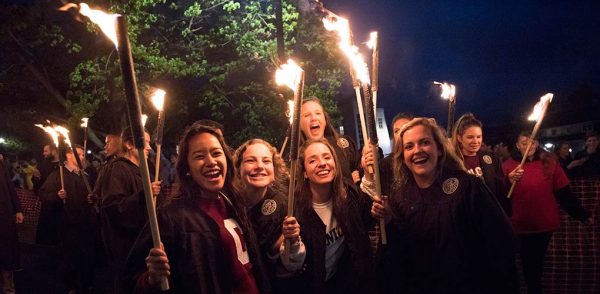
(Photo by Susan Kahn)
While the symbolism of the commencement-weekend Torchlight Ceremony — graduating seniors carrying the light of knowledge out into the world — is timeless, the annual procession has evolved considerably since its first in 1930. In recent years, many members of the community have joined in an extended examination of the tradition and its place in Colgate’s past and present, seeking to create a safer and more inclusive ceremony.
Aspects of the dialogue included concerns about physical safety, given the dangers in carrying fire. In addition, although academic gowns represent the ancient pursuit of knowledge, the sight of people wearing robes and carrying torches can also hold negative connotations from American history; some students and families have therefore chosen not to participate in Torchlight. Among the discussions, the Konosioni senior honor society held an open forum about the tradition’s symbolism, and a committee of students, faculty, staff, and alumni developed and shared recommendations that informed adjustments to improve the ceremony while preserving the time-honored tradition.
As the Class of 2016 processed over a modified, less-bottlenecked route, spectators cheered as the students, who chose a variety of garb from robes to business casual, with some carrying torch alternatives, made their way down to the bonfire on Whitnall Field.
“Colgate has been my home for the past four years and will continue to have my heart for years to come, so when students came forward regarding their discomfort during Torchlight, you can imagine how happy I was when that tradition was amended to make sure Colgate is a home to all of those who attend,” wrote Hagera Yilma ’16 on Instagram after the event. “I am so proud to call Colgate my alma mater and myself a Raider because of this.”
Grand slam commencement
 As this year’s commencement speaker, Major League Baseball Commissioner Robert D. Manfred Jr. P’16 brought a gift for each of Colgate’s newest real-world rookies — all 677 of them: custom-made MLB-Colgate team hats.
As this year’s commencement speaker, Major League Baseball Commissioner Robert D. Manfred Jr. P’16 brought a gift for each of Colgate’s newest real-world rookies — all 677 of them: custom-made MLB-Colgate team hats.
In his speech, Manfred cited a few key baseball players — Lou Brock, Joe Torre, and Jackie Robinson — to bring home some big life lessons.
“As you might expect, Jackie Robinson once uttered words that I believe teach the most important lesson of all: ‘A life is not important except in the impact that it has on other lives,’” Manfred quoted.
“You will all have busy and successful lives,” he added. “Please find room and time in those busy lives to positively impact the lives of others.”
See more on commencement weekend.
— Lee Tremblay ’16
Reunion reflections
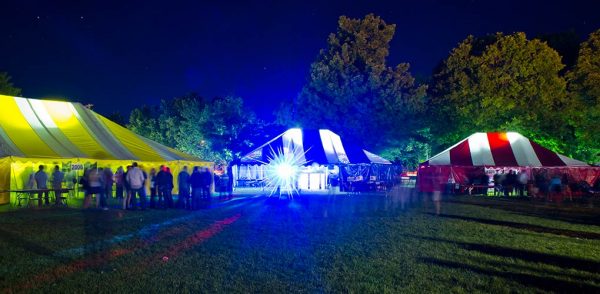
From as far away as France and Israel, alumni came home to Colgate in June, bringing more than 2,100 visitors to campus to celebrate the class years ending in ones and sixes. There were also several notable anniversaries: the 30th of the Alumni of Color organization and the 20th of Delta Delta Delta sorority.
Alumni slept in the residence halls again, visited old haunts, golfed at Seven Oaks, and rekindled flames at the traditional bonfire, fireworks, and Torchlight Ceremony. They also returned to the classroom: Reunion College offered more than 50 lectures and discussions.
After the excitement on Whitnall Field died down, here’s what some of the revelers had to say:
“It is like someone bottled our youth, aged it 25 years, and gave us a taste. And it was delicious!”
— Jonathan Mosher ’91
“One of the most powerful and historic moments on campus. Thank you!!! #ColgateAOC30”
— Shevorne Martin ’08
“Great weekend. Wish I had talked to some people more, gotten an hour or two more sleep, and realized (which I never do) that I can’t carry on the way I did 40 or 44 years ago.”
— Nat Jones ’76
“It’s like we never left.”
— Shannon Thompson Looby ’96






